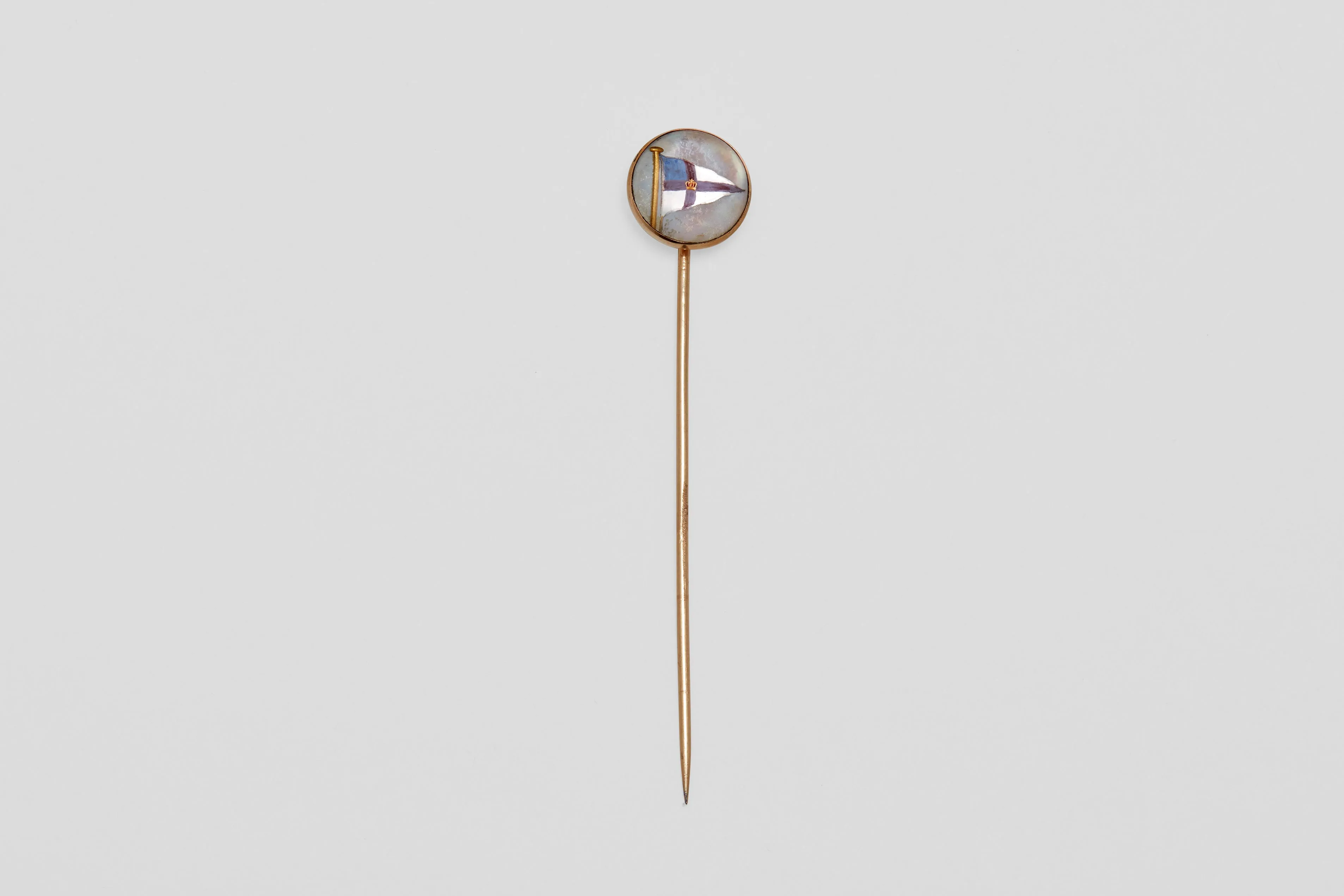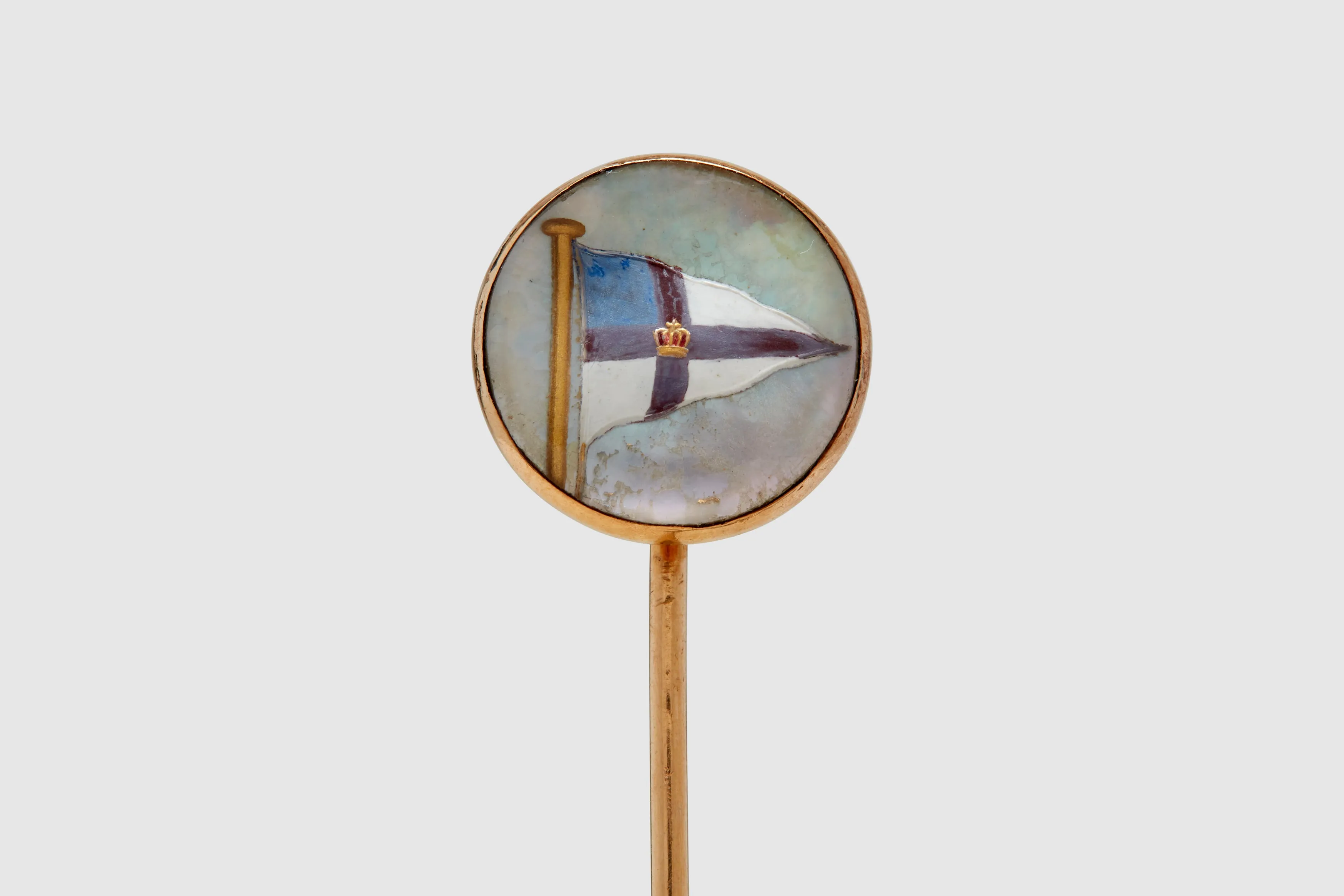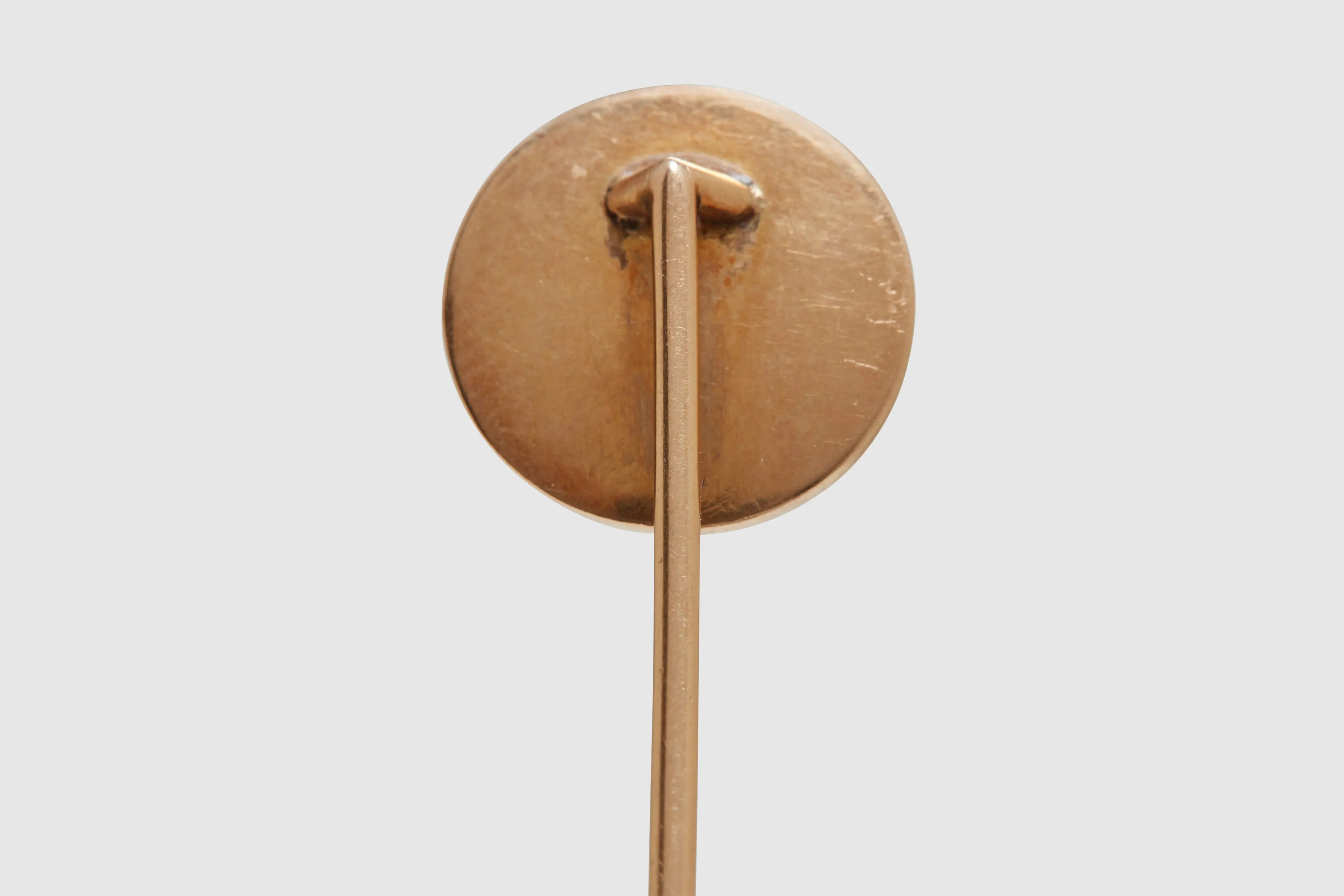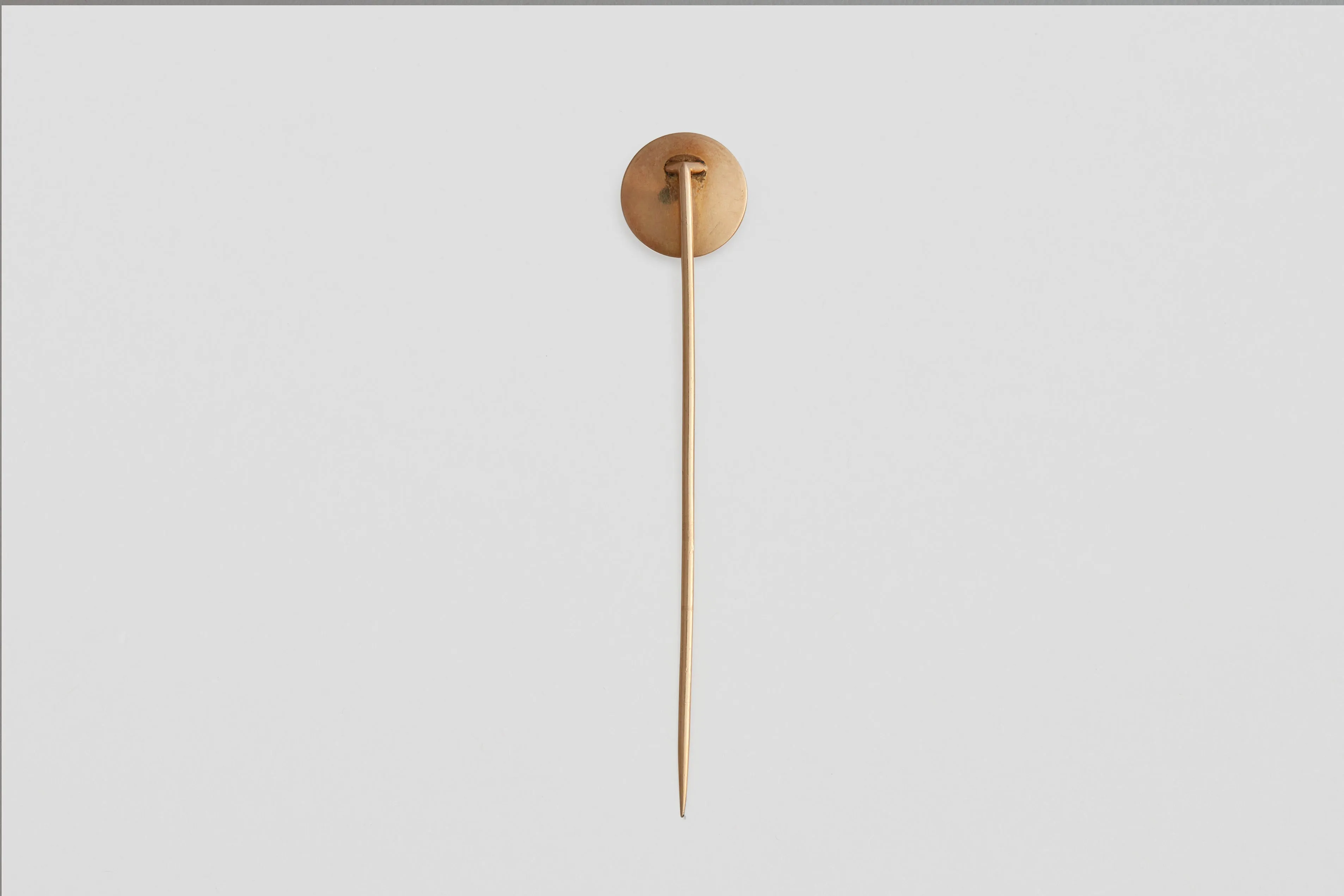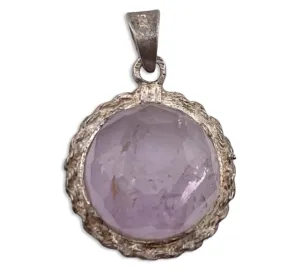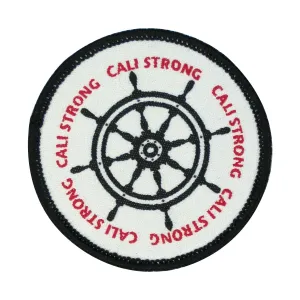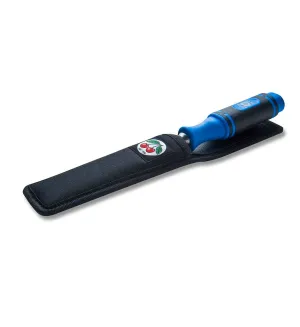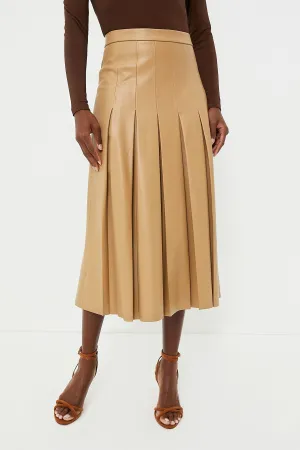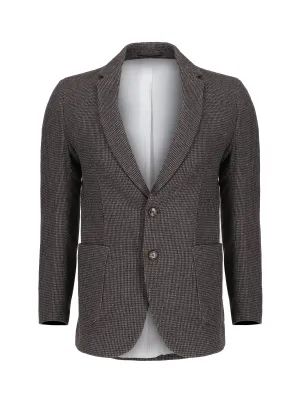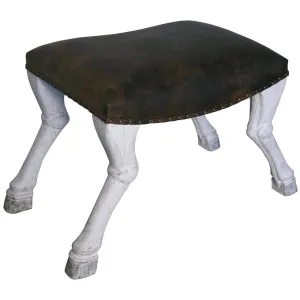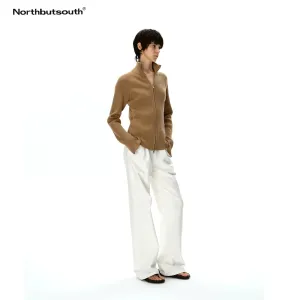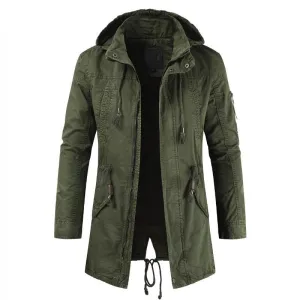A solid gold Essex crystal stick pin featuring the yacht burgee for the Royal Yacht Squadron. The yacht club burgee flag is a unique flag that represents each yacht club across the world, and is flown by members of the club's on their yachts. The flag in this case is from the Royal Yacht Squadron.
Founded on 1 June 1815 in the Thatched House Tavern in St James's, London as The Yacht Club by 42 gentlemen interested in sea yachting. The original members decided to meet in London and in Cowes twice a year, to discuss yachting over dinner. Membership was restricted to those who owned a vessel not under 10 tons. Today this is interpreted as any gentleman or lady, actively interested in yachting.
The Earl of Yarborough, later first Commodore of the Yacht Club, welcomed the Prince Regent as a member in 1817. In 1820, when the Prince Regent became George IV, it was renamed the Royal Yacht Club.
The Club started organising racing as a principal feature of the annual regatta, which is now known as Cowes Week. In 1833 William IV renamed the club, The Royal Yacht Squadron. Its association with the Royal Navy began early and Nelson's Captain at Trafalgar, Admiral Sir Thomas Hardy, headed the list of Naval members. The spirit of invention led to yachts of such celerity in sailing and beauty of construction that they were of utility to the Royal Navy. In 1829 the Admiralty issued a warrant to wear what is now the navy's White Ensign. The burgee (a triangular shaped flag identifying yacht club membership) is differenced with a St George's Cross and crown on a white background.
Today, the Royal Yacht Squadron remains one of the most preeminent yacht clubs in the world after celebrating its bicentenary in 2015. The clubhouse is located in Cowes Castle on the Isle of Wight in the United Kingdom, the club's patron was Queen Elizabeth II and the club's Admiral was the late Prince Philip.
Set into the center of this stick pin is a good sized cabochon rock crystal with the subject matter of the yacht burgee. Known as both Essex Crystals or reverse intaglios, this type of technique requires a mastery of both hand carving of hard stones, as well as the ability to paint on a microscopic and detailed level.
The process begins with selecting crystals that are cut and polished into a flat back and cabochon front, in order to help magnify the final painting. The procedure could take as many as twenty different grades of polish, and the entire process is done by hand. Once the stone is shaped, the design is drawn on the reverse side of the crystal with water colour. The image is then etched into the stone with a scribe pencil. From here begins the process of hand engraving. As many as 250 tools may be used in order to create each miniature masterpiece.
The crystal is carved with a paste made from a combination of oil and diamond dust. Once the carving has been completed the painting commences. Just as in the carving phase, the painting is done in reverse. Sometimes the brushes that are used have only a single hair. Once the painting is complete the painting is backed with a piece of mother of pearl that helps illuminate the work from the back, reflecting light back through the crystal.
The result is a magnificent, almost three dimensional, portrait that comes alive. The numerous hours spent in completing just one of these miniature works of art is very hard to imagine today, and there are only a handful of artists on the planet today that are able to get anywhere near the quality of the finest early carving and paintings.
Made in England, circa 1920's, the pin is presented in excellent condition.

